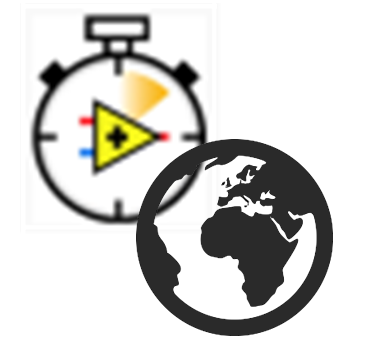RIO Developer Essentials Guide for Academia
"JSON" tag
RT networking: Web services
RT guide
Use the infrastructure of the Web for machine-to-machine exchange of information.
Learn the technical principles necessary to create VIs that can call Web services which return information in the form of JSON strings.
Call a Web service
RT code
Form a query string as a URL, retrieve the JSON string served by the Web service, and parse the JSON string to extract useful information.
Learn the technical principles necessary to host a Web service on the Academic RIO Device. Remote clients such as another LabVIEW-based target, an IoT device, or a conventional browser can retrieve sensor measurements and control indicators and actuators using commands obtained from the remote client's request query string.
Host a Web service
RT code
Host a web service on the Academic RIO Device to serve the states of onboard sensors (pushbutton and accelerometer) and system information (date, time, host name, and IP address), and to control the onboard LEDs based on a user-selected LED hex code.




